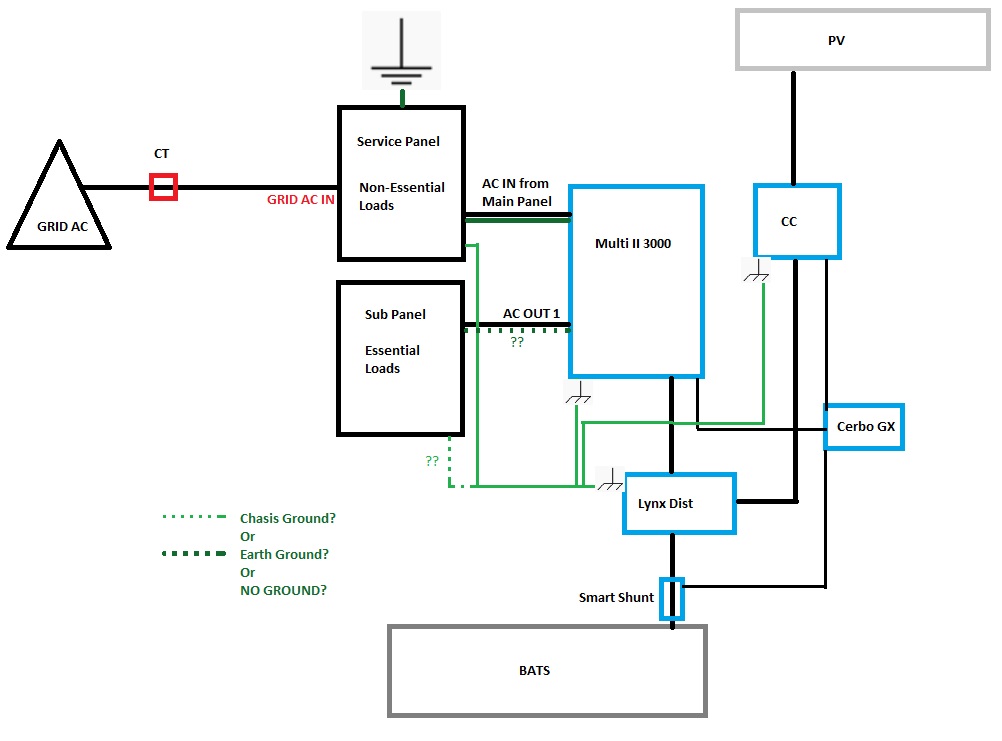My Grid AC comes into the main service panel as split phase 220/230. My setup has Grid AC going to the Multi AC AC IN via the main service panel (panel is earth grounded with bonded neutrals) through a 50A single pole breaker, as the Multi is the 120v model. I have the AC OUT 1 of the Multi running to a separate essential loads panel (isolated from Grid AC.)
Confused about correct grounding of the essential loads panel. The Multi's Ground Relay opens the relay when inverting, grounding the neutral to the chasis. Currently the chasis is grounded back to the main service panel. Trying to avoid a grounding loop here, but is this as simple as not using the ground conductor in the essential loads sub panel or do I ground the Multi's AC OUT 1 to the grounding bus bar in the essential loads panel? Or do i chasis ground with my other chasis grounds. Or, do i run a new ground to a cold water pipe in basement? Any thoughts or suggestion appreciated.

